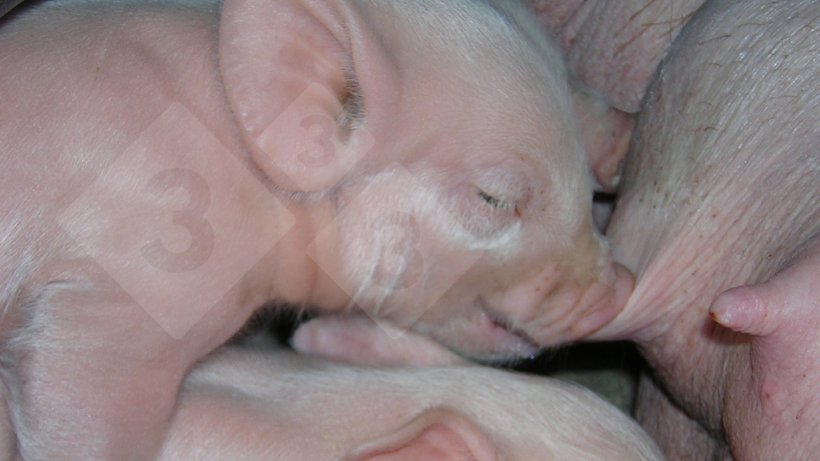In intensive production systems, pigs are weaned at an early age, around three to four weeks old. This is a crucial and stressful time for them, as separation from the dam and adapting to a new diet can lead to reduced feed intake, poor growth, and increased vulnerability to disease. To mitigate these effects, various feed additives and highly palatable substances such as commercial flavors and milk derivatives have been incorporated into their diets to stimulate consumption and ease the transition.
Like humans, pigs have a strong attraction to sweet tastes. They can perceive the five basic tastes: umami, sweet, bitter, sour, and salty. Sugars such as sucrose, glucose, and lactose are especially attractive to them. This trait seems to have evolved as a natural mechanism for detecting high-calorie energy sources. In fact, previous studies have shown that sucrose is pigs' most preferred carbohydrate, causing pleasure and acting as a learning enhancer. For this reason, it has been used as an additive in swine feed, although with conflicting results, since in some cases it has led to a reduction in feed intake and lower weight gain.

Pigs' feeding behavior is not only based on their innate preferences but also on learning, which can occur through maternal transmission. It has been observed that newly weaned piglets can benefit from the feeding experiences of their dams, as various volatile compounds in the maternal diet can be transferred to the amniotic fluid and milk. This process of prenatal and postnatal exposure influences the acceptance of familiar tasting foods, facilitating the transition to autonomous feeding after weaning. However, most previous studies have focused on studying the volatile fraction of the included compounds, i.e., aromas, perceived through the oronasal cavity.
Previous research explored how maternal supplementation with monosodium glutamate (MSG) affected taste perception in pigs after weaning. It was observed that piglets exposed to MSG in the sow diet showed a decrease in their preference thresholds for both MSG and sucrose, suggesting an interaction between the two flavors. Based on these findings, our research group (Figueroa et al., 2022) evaluated the impact of the inclusion of sucrose (common sugar) in the diet of gestating and lactating sows on the preference and consumption of sweet and umami solutions in their offspring after weaning. The findings provide key information for both the swine industry and for understanding the impact of maternal intake of sugars in mammals.
Sucrose in the sow diet and its effect on offspring
This study examined whether prenatal and lactational exposure to sucrose could modify the perception of sweet and umami taste in the progeny. Two groups of sows were used, one receiving standard commercial diets and the other with an addition of 50 g/kg sucrose. Subsequently, piglets' response to sucrose and MSG solutions after weaning was evaluated.
The results indicated that piglets born to dams supplemented with sucrose had a significantly higher sucrose preference threshold (15 mM) than those born to control sows (0.1 mM), indicating a lower sensitivity to sweet taste (150 units difference). As for the results for MSG, piglets born to dams supplemented with sucrose showed an increased sensitivity to this umami compound, but the difference with the control group animals was only one unit (Table 1).
Table 1. Preference thresholds for sucrose and monosodium glutamate solutions in piglets born to sows supplemented with sucrose or control.
| Preference threshold (mM) | Piglets sucrose group | Piglets control group | Taste sensitivity |
|---|---|---|---|
| Sucrose | 15 | 0.1 | Decrease |
| Monosodium glutamate | 3 | 6 | Increase |
Furthermore, piglets born to sucrose-supplemented dams consumed significantly less sucrose solutions between 1 and 18 mM, suggesting an adaptive regulation of caloric intake induced by maternal exposure to sucrose. This difference was specific for sweet taste, since when MSG consumption was compared, we did not observe significant differences between both groups of animals (Table 2).
Table 2. Total intake of sucrose and monosodium glutamate solutions in piglets born to sows supplemented with sucrose or control.
| Solution (mM) | Consumption (g) | SEM | P-value | |
|---|---|---|---|---|
| Control | Sucrose | |||
| Sucrose | ||||
| 1 | 415.9 | 267.2 | 21.60 | <0.001 |
| 6 | 426.0 | 342.7 | 23.73 | 0.021 |
| 12 | 481.0 | 369.7 | 15.74 | <0.001 |
| 18 | 481.3 | 297.4 | 22.15 | <0.001 |
| Monosodium glutamate | ||||
| 1 | 436.7 | 418.7 | 15.44 | 0.410 |
| 3 | 472.9 | 448.4 | 12.13 | 0.152 |
| 9 | 455.4 | 451.4 | 14.01 | 0.833 |
| 27 | 445.2 | 479.1 | 16.77 | 0.143 |
Implications for the swine industry
The study has important implications for diet formulation in swine production. In practice, it could be assumed that adding sugars to sow diets would improve feed palatability and feed acceptance in piglets after weaning. However, these results indicate that an excess of sucrose in the sow diet may induce changes in the taste sensitivity of the progeny, reducing their response to sweet tastes and altering their regulation of feed intake at critical stages of development.
This is a relevant finding to optimize feed transition in piglets. A lower sensitivity to sweetness may influence the acceptance of post-weaning diets and productive performance, which reinforces the importance of an adequate nutrient balance in the formulation of sow feeds.

Conclusion
This study confirms that including sucrose in sow diets significantly affects the regulation of intake and taste perception in the offspring. This highlights the need to adjust a balanced nutritional composition in the gestating and lactating sow diets to avoid undesirable effects on piglet feeding behavior.
These results also encourage reflection on the formulation of diets that maximize feed efficiency without creating imbalances in the regulation of intake at critical stages of growth. Regulating sugar intake in the sow diet is key to ensuring adequate appetite development and optimizing production efficiency in intensive swine production systems.




